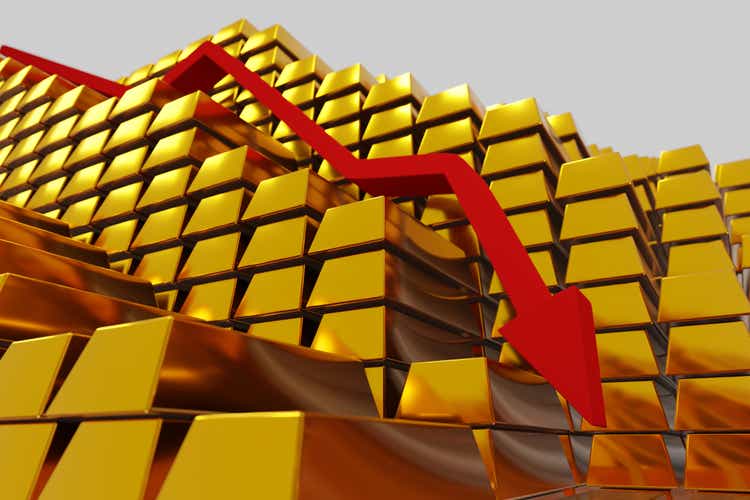
Image by hernan4429/iStock via Getty Images
Gold recently faced its first weekly loss in six consecutive weeks, marking a significant downturn and its most substantial decline since the onset of December. This downward trend comes on the heels of a notable de-escalation in the Middle East crisis, prompting a reduction in the geopolitical risk premium associated with the precious metal.
According to Ole Hansen, the head of commodity strategy at Saxo Bank, gold is currently undergoing a long-anticipated and rather robust correction, which is viewed as a healthy adjustment to market conditions. Hansen’s perspective follows a nearly 3% drop over two consecutive days, a shift that has now stabilized in the aftermath.
By the end of the trading week, front-month Comex gold (XAUUSD:CUR) for April delivery recorded a -2.6% decline to $2,334.80 per ounce, despite a marginal 0.2% uptick on Friday. Meanwhile, front-month April Comex silver (XAGUSD:CUR) experienced a more substantial dip, closing at -5.4% to $27.241 per ounce for the week, with a 0.3% decrease on Friday. Both gold and silver witnessed their most significant net and percentage drops since the week concluding on December 8.
Market Exchange-Traded Funds (ETFs) associated with gold such as (NYSEARCA:GLD), (NYSEARCA:GDX), (GDXJ), (IAU), (NUGT), (PHYS), (GLDM), (AAAU), (SGOL), (BAR), (OUNZ), (SLV), (PSLV), (SIVR), (SIL), (SILJ) were affected by these fluctuations.
Gold’s trajectory briefly shifted upwards on Friday following the release of fresh U.S. inflation data, which reinforced the prevailing notion that elevated interest rates are here to stay and that the Federal Reserve’s initial rate cuts are becoming more distant on the horizon.
The Fed’s primary measure of underlying inflation, the personal consumption expenditures price index, revealed a 0.3% increase in March and a 2.8% rise from the previous year, matching the previous month’s figures. This data, indicating a consistent inflationary trend, is anticipated to keep any expectations of a rate cut at bay until September, based on expert predictions.
Independent metals trader Tai Wong shared insights, suggesting that while persistent inflation remains on the horizon, the gold market has already factored these projections into current pricing. Wong predicts a consolidation phase for gold within the $2,300-$2,400 range in the near future.
